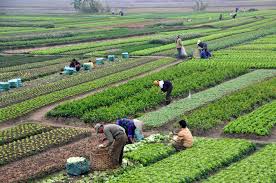The distribution of crop species in the various ecozones of Nigeria is largely influenced by the seasonality of rainfall, the duration, and regimes of the wet season. In areas where cropping is mainly rain-fed, these factors have a significant impact on the crop type, cropping pattern, cropping sequence, and scale of crop production.
Long-season root and perennial tree crops, which require high soil moisture, dominate in the wetter south, while short-season grain crops are more common in the drier north.
The same applies in areas of irrigated agriculture since rivers and floodplains that supply water for irrigation need to be replenished by rainfall. Soil types and vegetation also play a crucial role in crop distribution across the ecozones of Nigeria.
Read Also: 16 Medicinal Health Benefits of Asarum europaeum (European wild ginger)
Distribution of Root Crops
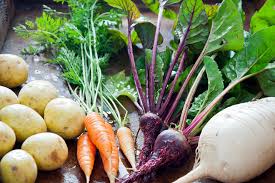
The main root crops of Nigeria are yams, cassava, cocoyam, and to a lesser extent, sweet potato, which is a minor crop. Root crops occupy an important place in Nigerian agriculture, although the amount of land allocated to their cultivation is less compared to other crops like cereals.
Despite this, root crops such as yams and cassava have high relative value per unit of land. The eastern states are the leading producers of root crops, with more extensive areas dedicated to their cultivation than other regions.
Three key areas account for over 75% of the land devoted to root crops: the extensive coastal plain in southern Cross River and eastern Rivers State, parts of Ogoja, Ikom, Obubra, and Abakaliki in the grassland savanna, and the western parts of Onitsha, Orlu, and Owerri in the forest zone.
Other root crop-producing areas, such as Oyo, Ondo, Benue, and Plateau States, contribute 25-49% of the land cultivated for root crops in both the forest and savanna zones. Root crops are also produced in the far north, but production is marginal north of the Niger and Benue Rivers.
Distribution of Cereals and Pulses
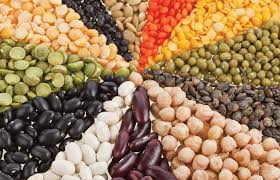
Cereals and pulses such as guinea-corn, millet, maize, cowpeas, and rice occupy a large proportion of Nigeria’s agricultural land.
1. Guinea-Corn
Guinea-corn is the most extensively cultivated cereal, with most production occurring in northern Nigeria, where it adapts to various soil types.
The four major sorghum species in Nigeria are Guinea, Kaura, Farafara, and Chad. Guinea-corn is versatile and grows in all ecological zones except the Sahel savanna.
It is especially important in the southern and northern Guinea savanna and the subhumid Sudan savanna. Further north, sorghum performs better on heavier soils in depressions and floodplains where rainfall is lower.
It is a minor crop in the derived savanna and forest zones. The main guinea-corn-growing states include Kaduna, Borno, Sokoto, and Kano, where it is commonly interplanted with millet.
2. Millet
In Nigeria, millet is produced primarily in the northern regions, especially in Borno, Bauchi, and Sokoto States, where it occupies 30% or more of the agricultural land. There is some overlap with guinea-corn production areas, particularly in Sokoto, Kano, and Katsina.
Most millet production occurs in the Sahel savanna zone, where moisture conditions are marginal for crop cultivation. However, millet is grown as far south as Borgu Province in Kwara State and parts of Benue State.
3. Maize
Maize is the most important cereal crop in the southern part of Nigeria. The south-western states, particularly Oyo, are key maize producers, while production in the south-east is less significant.
The Niger Delta region contributes minimally to maize cultivation. Maize is grown in all ecological zones except the Sahel savanna, but its importance declines toward the north, where production becomes sporadic.
There are three core areas where 30% or more of cultivated land is dedicated to maize: the Yoruba savanna (Oyo State and Egbado division), parts of Osun and Ibadan divisions, and areas within the forest zone near Ife-Ijesa and the Obubra-Ikom cocoa-producing regions. Other maize-producing areas include Edo State, Nasarawa, Lafia, and Wukari divisions in Benue and Plateau States.
4. Rice
Rice cultivation in Nigeria dates back to the 16th century and occurs in four main environments: rain-fed uplands, especially in southern Nigeria; tidal freshwater mangrove swamps; naturally flooded areas like the fadamas of northern Nigeria; and irrigated lands. These environments are found across many parts of the country, allowing rice to be produced in virtually all ecological zones.
5. Cowpeas
Cowpeas are widely cultivated and consumed across Nigeria. Production is particularly linked with sorghum and millet cultivation in northern Nigeria. The most important areas for cowpea production are found in the Sudan savanna zone, including Borno, Bauchi, Kano, and Sokoto States, which receive 508-1016 mm of rain annually.
This is because cowpeas thrive under light rainfall, well-drained loamy soils, and are drought-resistant. In the Guinea savanna zone, cowpea production occurs in northern parts of Niger State, northern Oyo State, and southern Ilorin Division of Kwara State.
Despite the less ideal conditions, cowpea cultivation in these areas persists due to regional consumption preferences, particularly in Oyo, where 50% of the cowpeas produced in the Ilorin area are sold to the more southern western states.
Read Also: 17 Medicinal Health Benefits of Cedrus Deodara (Deodar Cedar)
Distribution of Tree Crops in Nigeria
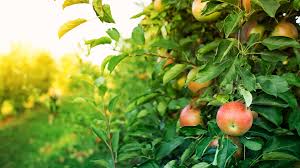
The ecologically significant tree crops in Nigeria include cocoa, oil palm, rubber (key export crops), and kola (primarily for domestic trade). The cultivation of coffee and cashew is also present but in more dispersed areas.
Cocoa, oil palm, rubber, and kola are mainly grown in the forest zone, with specific crops dominant in different sections. Cocoa and kola are cultivated in the western part of the forest zone, rubber in the central parts, and oil palm in denser concentrations in the eastern states, though its cultivation is widespread across the zone.
1. Cocoa Production
Cocoa is produced in two key moisture belts: western Nigeria, with an annual rainfall of 1143-1524 mm, and southeastern Nigeria, with rainfall of 1905-3048 mm.
Over 95% of Nigeria’s cocoa is produced in Ogun, Oyo, and Ondo States. Although cocoa production is increasing in the eastern states, the area allocated to its cultivation remains small. There is also some limited cocoa production in Bendel and Kwara States.
2. Kolanuts Production
The commercial kola species, Cola acuminata (Gbanja), is widely consumed in the northern states, though its primary production occurs in the western states, which account for over 80% of Nigeria’s output.
Major production areas include parts of Abeokuta, Ijebu, and Ibadan provinces, located within the forest zone. Smaller-scale production is scattered across the cocoa zone.
3. Rubber Production
Edo State is Nigeria’s leading rubber-producing area, contributing over 80% of the country’s rubber from peasant holders. In other parts of Nigeria, rubber production is concentrated on private and government plantations.
4. Oil Palm Production
Oil palm is an indigenous crop to West Africa and thrives in natural habitats such as riverbanks, moist valleys, and low-lying tropical areas. In Nigeria, oil palm groves are predominantly found in secondary forests across the southern region and parts of the derived savanna.
Three main types of oil palm groves exist in man-made habitats: secondary rainforest with oil palms, palm bush, and dense palm groves or farmlands with palms. Village groves and peasant plantations also contribute to oil palm production.
In western Nigeria and Edo State, oil palms are found in secondary rainforests, while oil palm bushes are present in parts of Asaba and Warri Divisions of Edo State, and in Kabba and Igala Divisions of Kwara State.
Distribution of Oil Seeds in Nigeria
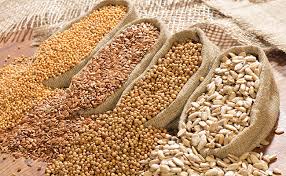
Nigeria produces several important oil seeds for both export and domestic consumption, including groundnuts, beniseed (sesame), and soybeans. These crops are predominantly grown in northern Nigeria, outside the forested regions.
1. Groundnut Production
Groundnuts have been cultivated in northern Nigeria since the 1800s. The main groundnut-producing areas are located in the Sudan savanna zone, especially in regions receiving less than 1016 mm of annual rainfall.
These areas are characterized by light sandy soils, which suit groundnut cultivation. Kano is the largest producer, though production also extends into Borno, Sokoto, Bauchi, Adamawa, Taraba, Katsina, and Gombe States. Groundnut cultivation is less intensive in Sokoto and Niger States, and production is limited south of Latitude 11°N, mainly in Bauchi, Gombe, and Adamawa States.
2. Beniseed Production
Beniseed, or sesame, is mainly produced in four regions of Nigeria: Tiv Division and Doma District in Benue State, Igbira Division of Kwara State, and Kwali area in Niger State. These regions are situated in the Guinea savanna zone, where annual rainfall ranges from 1016-1397 mm.
3. Soybean Production
Though an exotic crop, soybeans are grown in areas similar to those of beniseed. The main producing regions are in the Tiv Division, extending into neighboring Niger and Kabba Provinces. Soybean production also stretches northward into southern Zaria and southern Katsina Provinces.
4. Industrial Crops Distribution in Nigeria
The main industrial crops cultivated in Nigeria include cotton, tobacco, sugar-cane, and kenaf.
5. Cotton Production
Cotton has been grown in Nigeria for centuries and was historically linked with the local spinning and weaving industries, particularly in Kano and Iseyin. Cotton is grown in three regions of Nigeria: northern (most extensive), eastern (moderate), and southern (minor).
The northern zone covers Zaria Province and southern parts of Kano and Katsina Provinces. The eastern zone spans southeastern Bauchi, adjoining districts of Adamawa, and southwestern Borno State. Cotton is also produced in the Lowland and Pankshin Divisions of Plateau State, particularly around Gombe and Kumo, where cotton ginneries are located.
In the southern zone, cotton production is concentrated in the Borgu Division of northwest Kwara State and the Ankpa area in Idoma Division of Kogi State, with smaller areas of cultivation in Bida Division and between Nasarawa and Keffi in Nasarawa State.
6. Tobacco Production
Tobacco has been cultivated in Nigeria for centuries. Air-cured tobacco is grown in western Nigeria (Ogbomoso) and northern regions (Zaria, Shinkafe, Gusau, Birnin Kebbi, Kano, Hadeija, and Sokoto).
In western Nigeria, tobacco is cultivated in smallholdings ranging from 0.4 to 2.0 hectares. Flue-cured tobacco is produced in northwestern Oyo State, particularly in areas with 1016-1270 mm of rainfall, light soils, and abundant dry wood for curing.
7. Sugar-Cane Production
Sugar-cane is traditionally grown in small quantities on river floodplains by Nigerian farmers. Limited quantities of crude brown sugar were produced in Kano, Katsina, and Zaria before the establishment of sugar refineries in the 1960s.
Commercial sugar-cane production began in 1957 at Bacita near Jebba on the Niger River floodplain, marking the origin of the Nigerian Sugar Company. Other sugar-cane estates have since been established along the Niger and Benue rivers.
8. Kenaf Production
Kenaf has been cultivated in various parts of Nigeria for centuries. It became commercially viable in the early 1960s as a substitute for jute, with production concentrated in Jema’a, northern Nigeria. Other areas of kenaf cultivation include the floodplains of the Niger and Benue rivers and parts of Oyo State.
Do you have any questions, suggestions, or contributions? If so, please feel free to use the comment box below to share your thoughts. We also encourage you to kindly share this information with others who might benefit from it. Since we can’t reach everyone at once, we truly appreciate your help in spreading the word. Thank you so much for your support and for sharing!

